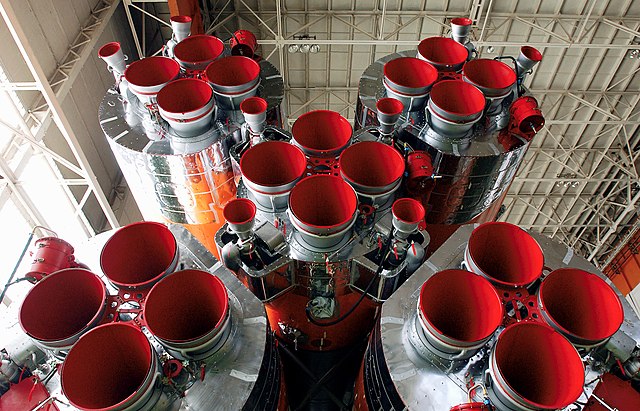A vernier thruster is a rocket engine used on a spacecraft or launch vehicle for fine adjustments to the attitude or velocity. Depending on the design of a craft's maneuvering and stability systems, it may simply be a smaller thruster complementing the main propulsion system, or it may complement larger attitude control thrusters, or may be a part of the reaction control system.
The name is derived from vernier calipers which have a primary scale for gross measurements, and a secondary scale for fine measurements.
A 1960s Mercury-Atlas vernier thruster
Vernier thrusters on the side of an Atlas missile can be seen emitting diagonal flames.
The first- and second-stage engines of a Soyuz, showing the four RD-107 modules with twin vernier nozzles each, and the central RD-108 with four steerable vernier thrusters
A reaction control system (RCS) is a spacecraft system that uses thrusters to provide attitude control and translation. Alternatively, reaction wheels are used for attitude control. Use of diverted engine thrust to provide stable attitude control of a short-or-vertical takeoff and landing aircraft below conventional winged flight speeds, such as with the Harrier "jump jet", may also be referred to as a reaction control system.
Two of four Reaction Control System thruster quads on the Apollo Lunar Module
Gemini Orbit Attitude and Maneuvering System, and Reentry (mislabeled "Reaction")[clarification needed][citation needed] Control System
RCS thrusters on the nose of Discovery, a Space Shuttle orbiter.





![Gemini Orbit Attitude and Maneuvering System, and Reentry (mislabeled "Reaction")[clarification needed][citation needed] Control System](https://upload.wikimedia.org/wikipedia/commons/thumb/7/77/Rcs-gemini.jpg/640px-Rcs-gemini.jpg)
